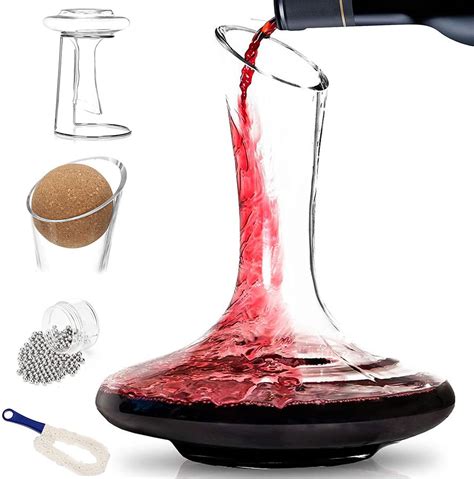The Ultimate Decanter Drying Guide for Wine Lovers
For wine enthusiasts, the decanting process is more than just a ritual; it's an essential step in enhancing the aroma and taste of their cherished bottles. However, the post-decanting process often leaves wine lovers with a lingering question: how do you properly dry a decanter? A sparkling clean and dry decanter is crucial for preserving the integrity of your next pour, preventing unwanted residue and ensuring the best possible drinking experience. This comprehensive guide will walk you through various methods, addressing common concerns, and leaving you with the knowledge to keep your decanters gleaming.
Why Proper Decanter Drying Matters
Neglecting proper decanter drying can lead to several undesirable outcomes. Water spots can dull the appearance of your glassware, and more importantly, lingering moisture can harbor bacteria and affect the taste of your next bottle of wine. Residual wine, even in minute amounts, can also ferment and leave an unpleasant taste. A thoroughly dried decanter is paramount for maintaining hygiene and ensuring your wine's quality remains uncompromised.
How to Dry a Decanter: Step-by-Step Methods
Several techniques effectively dry a wine decanter, each with its own advantages and disadvantages. Choose the method that best suits your needs and decanter type.
1. Air Drying: The Classic Approach
Air drying is the simplest method. After rinsing your decanter, allow it to air dry upside down on a clean, absorbent cloth or a drying rack. This method is gentle on the glass and requires minimal effort. However, it's the slowest method and isn't suitable for urgent situations.
- Pros: Gentle, inexpensive, requires minimal equipment.
- Cons: Slowest method, may leave water spots depending on the water hardness.
2. Towel Drying: Speed and Efficiency
For a quicker drying process, use a clean, lint-free microfiber cloth. Gently wipe the inside and outside of the decanter, paying close attention to the crevices. Microfiber cloths are highly absorbent and leave minimal lint behind.
- Pros: Relatively fast, effective at removing water spots.
- Cons: Requires effort, improper technique can leave streaks.
3. Rice Drying: The Absorbent Solution
Fill your decanter with uncooked rice for several hours. The rice will absorb the remaining moisture, leaving the decanter dry. This method is particularly effective for narrow-necked decanters that are difficult to reach with cloths.
- Pros: Effective for hard-to-reach areas, gentle on the glass.
- Cons: Time-consuming, requires a significant amount of rice.
4. Using a Decanter Drying Rack: Convenience and Efficiency
Invest in a purpose-built decanter drying rack. These racks are designed to hold decanters upside down, allowing for optimal air circulation and faster drying.
- Pros: Efficient, convenient, prevents scratches or breakage.
- Cons: Requires purchasing a dedicated drying rack.
Addressing Specific Decanter Challenges
How do I dry a crystal decanter?
Crystal decanters require extra care. Avoid abrasive materials like rough cloths or harsh detergents. Opt for gentle air drying or microfiber cloth drying to prevent scratches.
How do I dry a decanter with a narrow neck?
For narrow-necked decanters, rice drying or a long-handled cleaning brush followed by air drying is recommended.
What if my decanter has stubborn stains?
For persistent stains, try soaking the decanter in warm, soapy water with a few drops of white vinegar before drying. Avoid using harsh chemicals.
Maintaining Your Decanter for Longevity
Regular cleaning and proper drying are key to maintaining your decanter’s beauty and functionality. By following these simple steps, you can ensure your decanter remains in pristine condition for years to come, enhancing your wine-drinking experience with every use.

